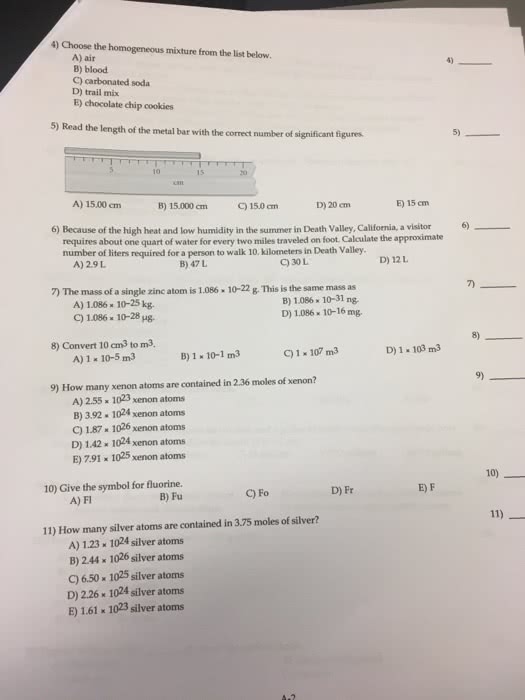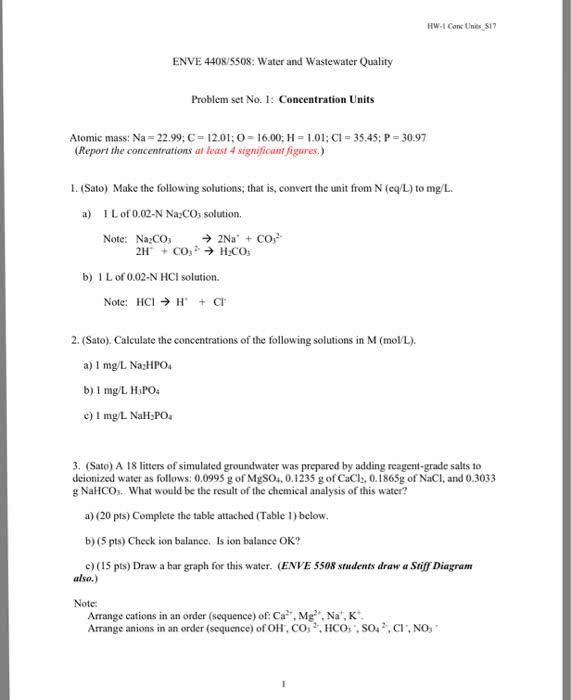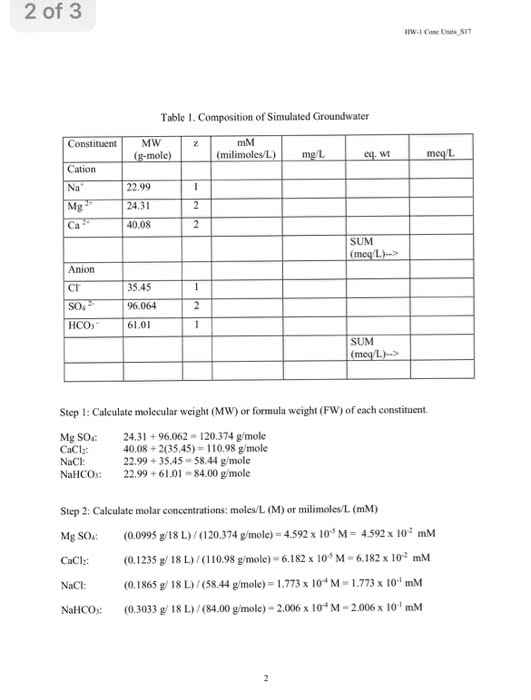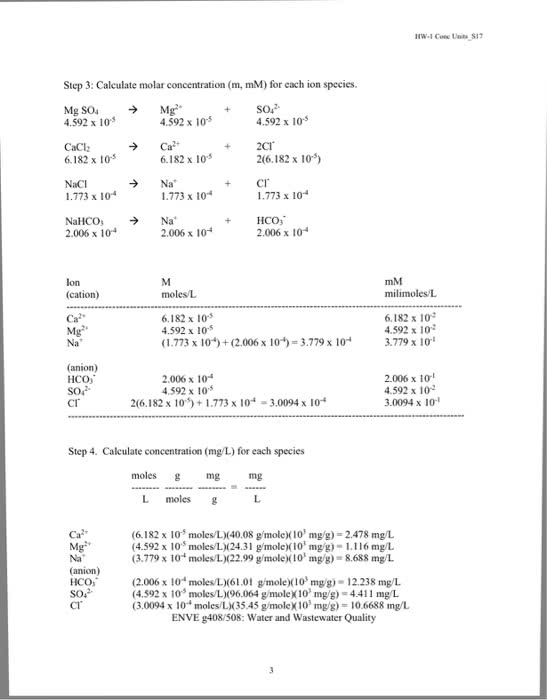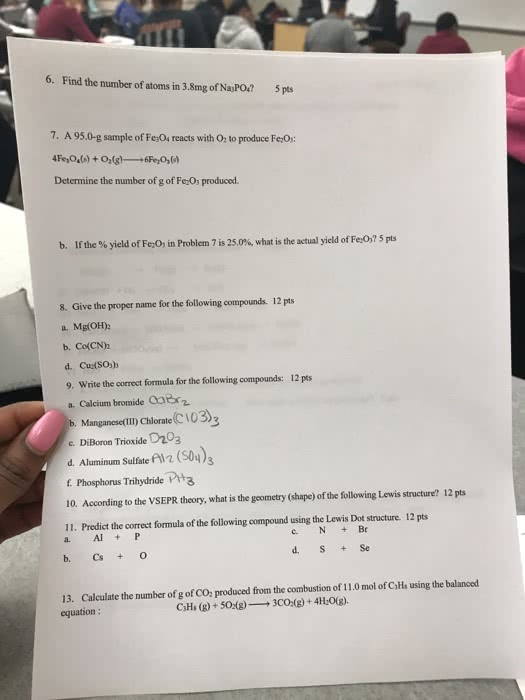CHEM 1001 Lecture Notes - Lecture 1: Junkers J 1, Limiting Reagent, Intermolecular Force

7
CHEM 1001 Full Course Notes
Verified Note
7 documents
Document Summary
1. 70 mg vitamin b2 (ribolflavin),(c17h2on4o6) (cid:230) (cid:246) (cid:230) (cid:246) (cid:230) (cid:246) (cid:231) (cid:231) (cid:231) (cid:230) (cid:246) (cid:230) (cid:246) (cid:230) (cid:246) (cid:231) (cid:231) (cid:231) To calculate the number of molecules in a mass, convert the mass to grams, divide by molar mass to obtain moles and multiply by. Avogadro"s number to obtain the number of molecules: 20(12. 01 g/mol) +30(1. 008 g/mol) +16. 00 g/mol = 286. 4 g/mol: +6(16. 00 g/mol) = 441. 4 g/mol. 17(12. 01 g/mol) + 20(1. 008 g/mol) + 4(14. 01 g/mol) 6(16. 00 g/mol) =376. 4 g/mol. This is a yield problem, where we want to compare the actual amounts with the theoretical amounts. In this problem, we are given the actual yield (60. 0 g); therefore, we must carry out standard mole mass conversions to find the theoretical amount. 2 and then multiply through by 2 to clear fractions: 2 hgo of. Now use stoichiometry to obtain the theoretical yield:


